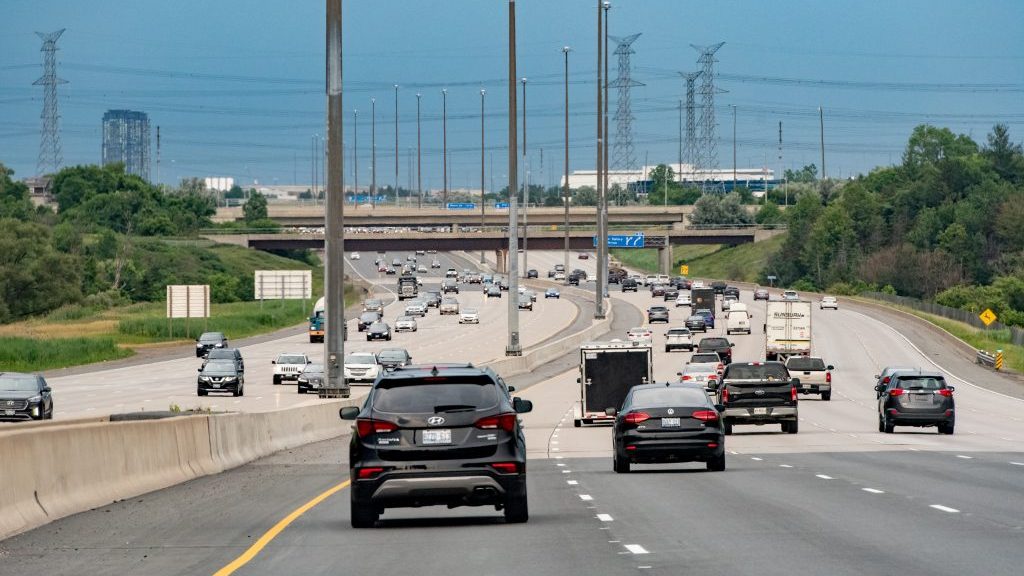A new report outlining a long-term vision of transportation, transit planning and infrastructure improvements for eastern Ontario was released recently by the Ministry of Transportation (MTO) and industry stakeholders are applauding its contents.
The Ontario Road Builders’ Association (ORBA) and the Residential and Civil Construction Alliance of Ontario (RCCAO) are supportive of the plan, billed Connecting the east: A draft Transportation plan for eastern Ontario.
“New transit and roadway expansion will play an important role in making travel easier, whether we are commuting to work, travelling to visit family and friends or in the transportation of goods,” said Bryan Hocking, CEO of ORBA, in a statement to the Daily Commercial News. “The population of eastern Ontario currently sits at over 1.8 million and will continue to grow. The planning approach to public transportation infrastructure improvements need to be addressed in a holistic way today so that we can meet eastern Ontario’s transportation challenges of tomorrow.”
The plan continues the government’s focus on long-term transportation and transit planning across all Ontario, said RCCAO executive director Nadia Todorova.
“This plan is key to ensuring that critical infrastructure expands to meet the needs of a growing province over the long-term,” she said in a statement. “RCCAO commends the fact that this plan contains both transit and transportation expansion – both are necessary to ensure that Ontario regions have the infrastructure needed to keep people and goods on the move, in communities large and small.”
The plan is the final of four regional transportation plans including Connecting the Southwest, Connecting the North and Connecting the Greater Golden Horseshoe.
“The detailed planning of the eastern Ontario transportation plan, as well as the recently released southwestern Ontario, northern Ontario, and Greater Golden Horseshoe transportation plans offers a proactive and predictable framework for industry to plan future infrastructure work and the associated labour needs it entails,” Todorova added.
For the construction industry, the plan includes details of transportation-related initiatives that are currently underway and a preview of initiatives that are in the planning stages.
“MTO will continue to work with ORBA and other stakeholders to ensure that the OHP (Ontario Highway Program) continues to provide information to the construction industry in a timely way and to maintain a balance between being open and transparent while preserving competition within the roadbuilding industry to ensure appropriate bidding and pricing,” said Sandra Bento, a spokesperson for the MTO.
The plan incorporates more than 50 short and long-term actions across five goal areas consistent with the other regional plans: connecting people and places; supporting a competitive and open for business environment; providing more choice and convenience; improving safety and inclusion; and preparing for the future.
The plan includes the expansion of Highway 417 to four continuous lanes in each direction between Highway 416 and Maitland Avenue in Ottawa; long-term planning work to widen Highway 401 to up to eight lanes in the United Counties of Leeds and Grenville; improvements to local and intercommunity bus services; support for the trucking sector by adding truck stops along Highway 401; and the development of a new marine strategy,
In terms of road rehabilitation projects, Bento explained there is an action plan to widen Highway 17 from two to four lanes from Arnprior to Renfrew and construct four interchanges including one at Calabogie Road. Another action is to rehabilitate and twin the existing Norris Whitney Bridge between Belleville and Prince Edward County. Planning is also underway for the rehabilitation or replacement of highway structures at various locations in the United Counties of Leeds and Grenville and Stormont, Dundas and Glengarry, as well as for highway improvements along Highway 401 in Quinte West and Belleville.
There are also ongoing local projects to repair roadways and bridges to connect with provincial highways or border crossings through the Connecting Links program, and investments in on-reserve road construction and maintenance through the First Nations Road Program, Bento noted.
The plan has been informed by research, technical work, an online public survey, a series of parliamentary assistant-hosted roundtables and a separate roundtable with eastern Indigenous communities
Public feedback will be accepted over a 120-day period on the Environmental Registry of Ontario. A long-range technical study of the eastern transportation network will also be conducted and will involve broad engagement starting this summer.
Follow the author on Twitter @DCN_Angela.










Recent Comments